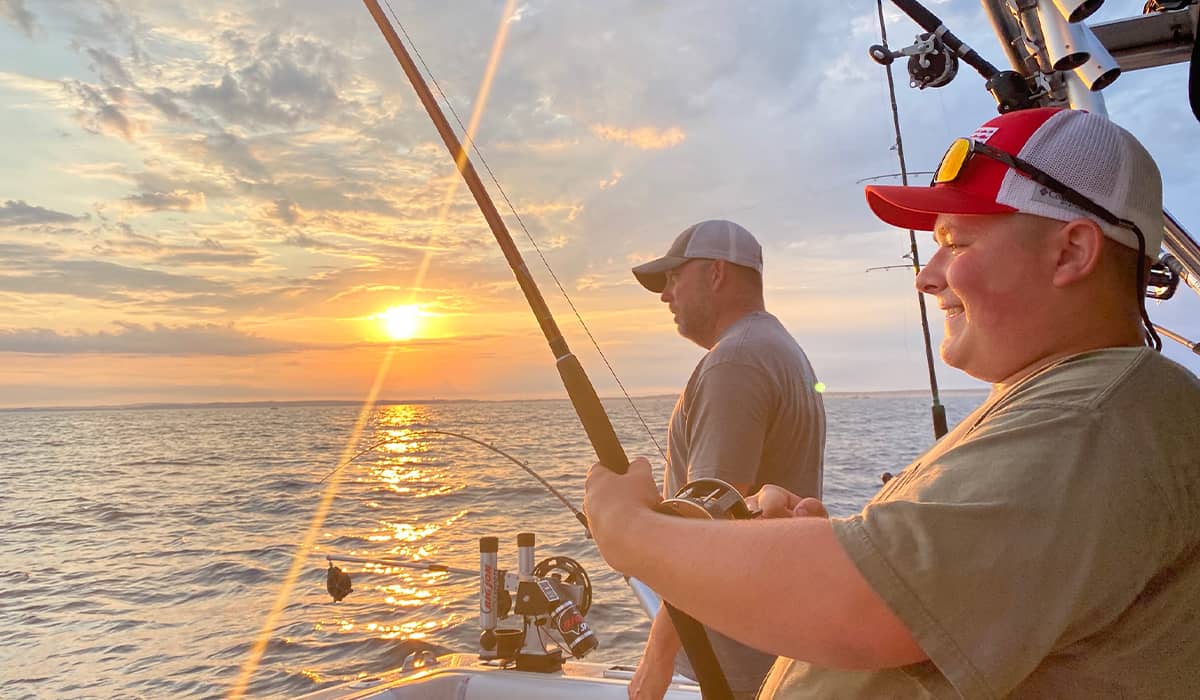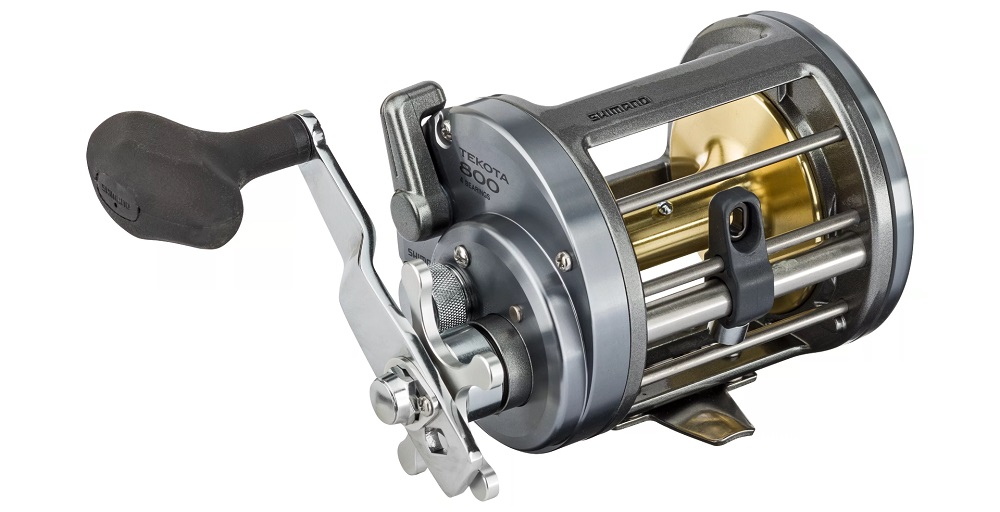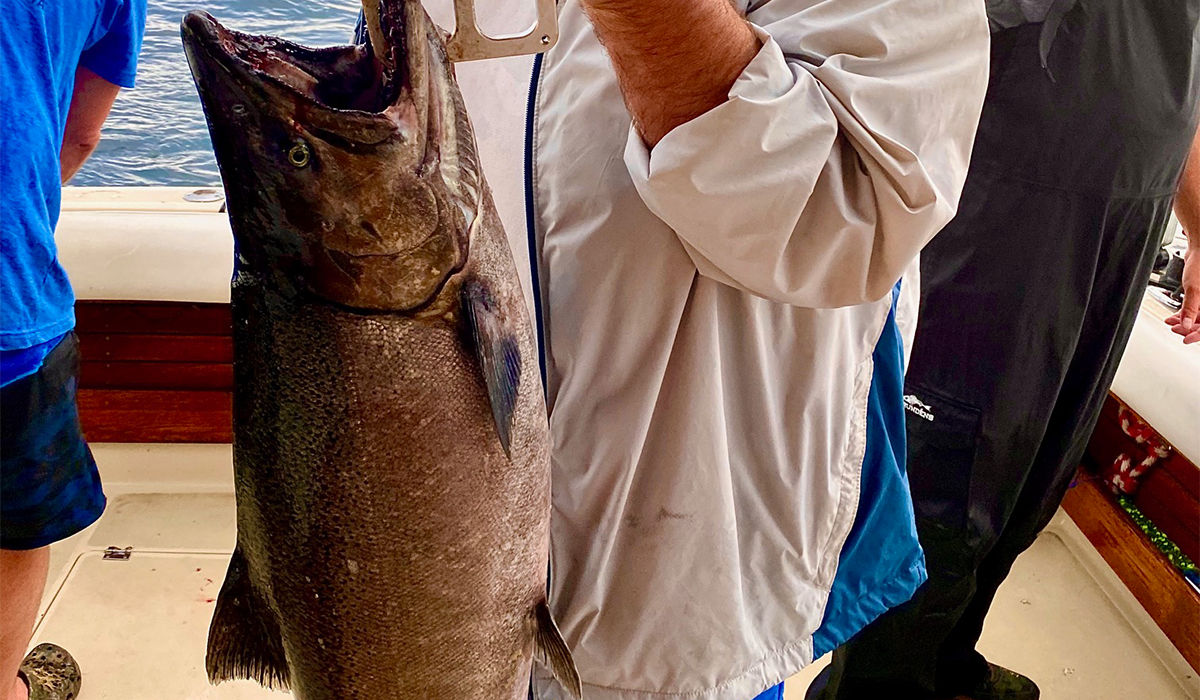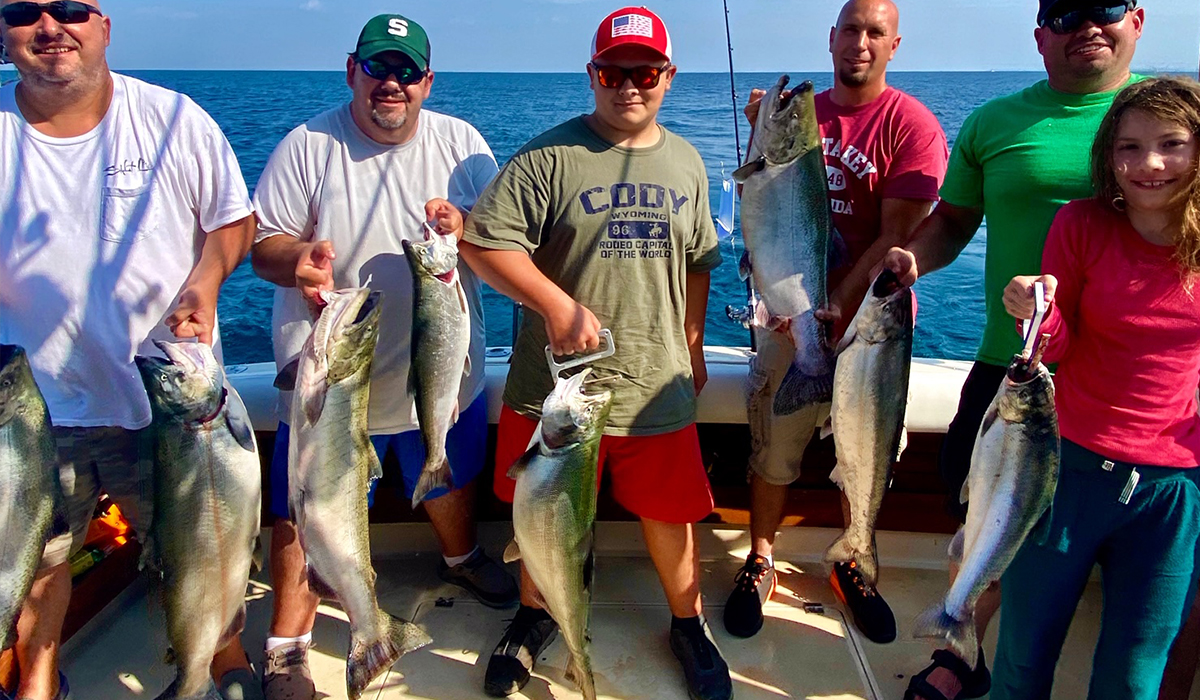Want to Go Salmon Fishing on the Great Lakes?
Derrek Sigler 08.26.20

Anglers around the Great Lakes know what the end of summer means – it’s time for salmon fishing. In late August, those kings and coho salmon that have been swimming the lakes, feeding and getting big, start stacking up just offshore of the rivers they spawn in. They strap on the feedbag for one last burst of energy before they run upstream to complete their life cycle. As they come closer to the river mouth, the fishing keeps getting hotter and hotter. There is simply no better time to go salmon fishing on the Great Lakes!
Lake fishing

If you’re headed out onto one of the Great Lakes to chase salmon, be prepared for anything. If you’ve never gone before, try going out with a charter service first. I recently went out with DarkBlue Charters out of Manistee, Michigan. We ran 9 lines with a combination of down riggers, Dipsy Divers and planer boards, and used flashers with flies and meat rigs, as well as J-Plugs for lures. Many charters, like DarkBlue, offer on-the-water classes in how to find and catch the fish.
What are they using?
For down riggers – which put your bait at the depth the fish are at – there’s a couple ways to go. The traditional choice is Big Jon Downriggers, a brand developed and made in Michigan. They are very stout and are the standard for Great Lakes riggers. Most pros will add a Fish Hawk system that gives you speed at the downrigger ball, along with water temperature. This information is key to getting on the fish. If you’re really looking to get serious, Cannon Downriggers has the Optimum series that wirelessly connects with the Fish Hawk system as well as select Humminbird electronics to let you troll along set depth ranges, and move automatically to adjust for depth, temperature and fish location.
Rods, line and more

One of the more popular trolling rods for salmon on the Great Lakes is the Okuma Classic Pro GLT. These are rods made specifically for the Great Lakes and there are models available for every type of fishing, from running downriggers, to Dipsys and lead core. My son caught his first ever salmon, a 24lb chinook, on a planner board to the far outside of our spread. Behind the board was 450 feet of copper-braided trolling line. He had quite a time and the battle lasted for well over a half hour. Was he happy? You bet! Was dad proud? Unbelievably so.
Dipsy Divers are pretty neat. These are disk-shaped trolling tools that let you set the angle and direction of your troll. When the fish hits, a release is tripped allowing you to just fight the fish. Multiple sizes and styles of Dipsys are available. I have some small ones I have used for trolling walleye in smaller lakes.

Reels are a very important investment in your fishing fun. Trolling means level-wind reels, and there are several schools of thought on what is best. Penn and Okuma make some great reels, but if I were going to purchase a reel today, I’d opt for the Shimano Tekota with a line counter. These reels have a 4.2:1 gear ratio, and up to 24lbs. of drag. They hold enough line and are great for the Great Lakes.
Rigging
Starting on the business end, a lot of fish are caught on trolling flies. These flies are essentially a mylar skirt with some plastic beads wrapped around a circle hook. Another option is a meat rig. A meat rig, or cut-bait rig adds a scent trail with the use of cut bait, usually smelt, alewives or herring with some mylar flashy material and a treble hook. Trolling spoons are another option, but on my latest outing, we didn’t use any.

The lure is attached to a leader which then is attached to a flasher or dodger. These are attractor lures with flashy sides that trigger a salmon to feed. The idea is the flasher looks like a small school and the lure is a straggler that is easy pickings. There are several options, although the most popular these days is the Dreamweaver Spin Doctor. This flasher does a tight spin that gives the illusion of a bigger school of baitfish.
J-Plugs are another bait that gives a tight wobble action. These lures from Luhr Jenson come in a wide range of colors. We were doing well with white and rainbow color versions. An important piece of gear you also need is a UV flashlight. UV is important as it gives your glow-in-the-dark lures the light they need to light up. This resembles bioluminescence and can trigger strikes in the pre-dawn hours that are hot for fishing salmon.
And this is just the beginning…
Of course, we’re only skimming the surface of what all goes into fishing for salmon on the Great Lakes. You also need a proper boat for the bigger water, and you need to know the rules. Fishing regulations and all! Look for more information here soon, including river set ups and more.
Catch ‘em up!

History of the fishery
Salmon in the Great Lakes started with a problem. Native lake trout populations had taken a severe nose dive by the mid-20th century due to vast overfishing. Alewives, an invasive species transported in through freighter ballast water had thrived, and by the mid-1960s, masses of dead, rotting alewives washed up on beaches. Something had to be done. Howard Tanner, the new fisheries chief for the state of Michigan, had an idea. He obtained coho salmon eggs with the plan to stock the Platte River and Bear Creek, which feed into Lake Michigan, with smolts. Chinook salmon soon followed. The fish did well in Michigan and fared okay in Superior and Huron, although the Huron fishery has dropped off as of late. Lake Erie has never been able to support a strong population of salmon, due to the warmer waters, but there are some fish still there – in theory. Lake Ontario has a strong run of chinook and coho with fish often reaching the largest sizes of the Great Lakes due to decent forage and good management. There is a small population of kokanee (land-locked sockeye) salmon in Ontario, too. Atlantic salmon run in Huron and Ontario, but are very hard to manage, making the fishery harder to enjoy.

